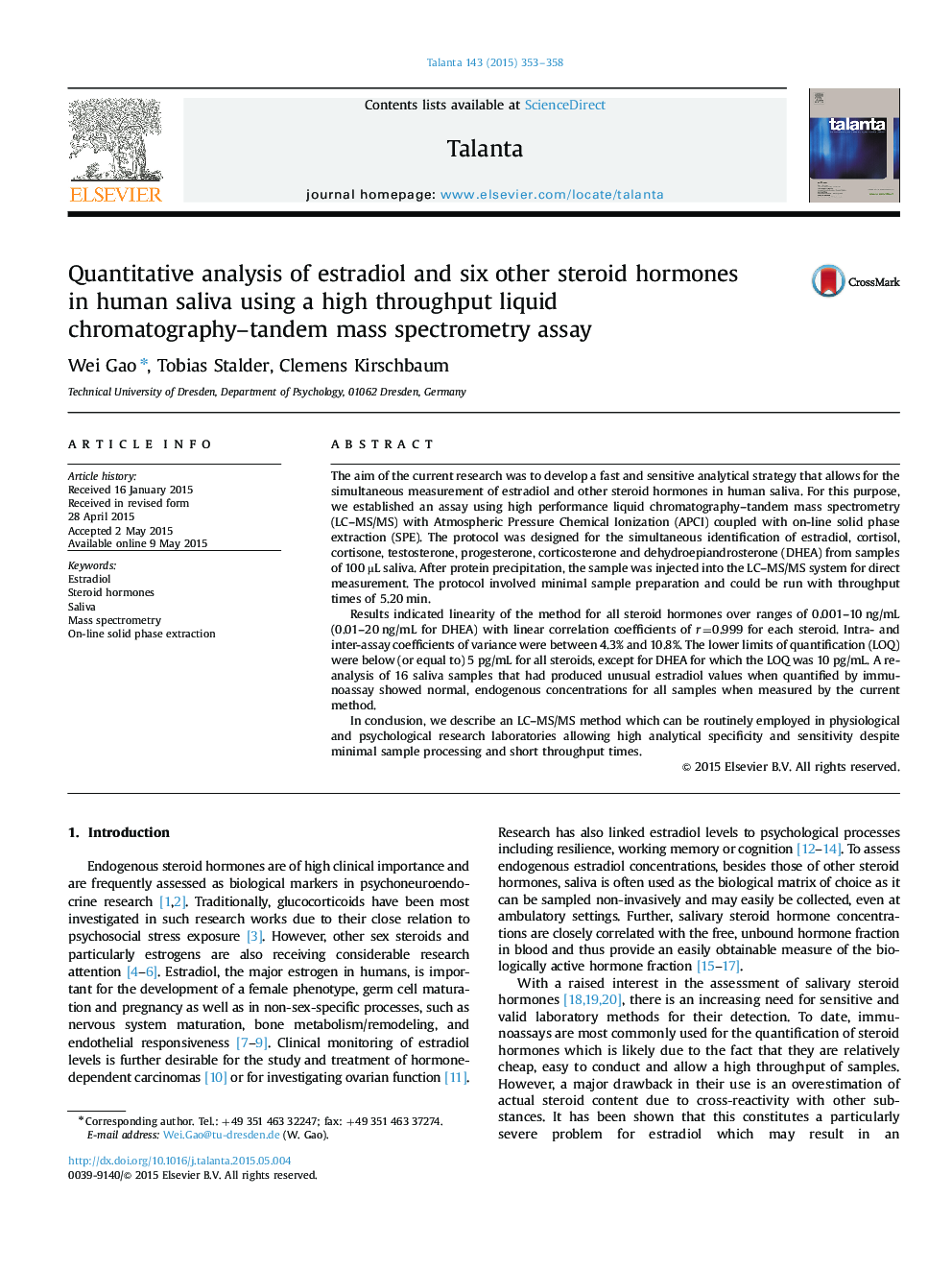| Article ID | Journal | Published Year | Pages | File Type |
|---|---|---|---|---|
| 1241896 | Talanta | 2015 | 6 Pages |
•A method can measure estradiol and six other steroid hormones in human saliva.•An on-line SPE method is used to shorten sample preparation times.•The method has high sensitivity, high selectivity and high throughput.•Seven steroid hormones could be reliably detected at physiological concentrations.
The aim of the current research was to develop a fast and sensitive analytical strategy that allows for the simultaneous measurement of estradiol and other steroid hormones in human saliva. For this purpose, we established an assay using high performance liquid chromatography–tandem mass spectrometry (LC–MS/MS) with Atmospheric Pressure Chemical Ionization (APCI) coupled with on-line solid phase extraction (SPE). The protocol was designed for the simultaneous identification of estradiol, cortisol, cortisone, testosterone, progesterone, corticosterone and dehydroepiandrosterone (DHEA) from samples of 100 µL saliva. After protein precipitation, the sample was injected into the LC–MS/MS system for direct measurement. The protocol involved minimal sample preparation and could be run with throughput times of 5.20 min.Results indicated linearity of the method for all steroid hormones over ranges of 0.001–10 ng/mL (0.01–20 ng/mL for DHEA) with linear correlation coefficients of r=0.999 for each steroid. Intra- and inter-assay coefficients of variance were between 4.3% and 10.8%. The lower limits of quantification (LOQ) were below (or equal to) 5 pg/mL for all steroids, except for DHEA for which the LOQ was 10 pg/mL. A re-analysis of 16 saliva samples that had produced unusual estradiol values when quantified by immunoassay showed normal, endogenous concentrations for all samples when measured by the current method.In conclusion, we describe an LC–MS/MS method which can be routinely employed in physiological and psychological research laboratories allowing high analytical specificity and sensitivity despite minimal sample processing and short throughput times.
Graphical abstractFigure optionsDownload full-size imageDownload as PowerPoint slide
